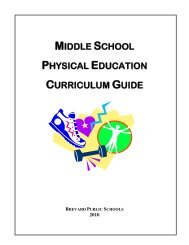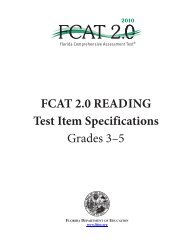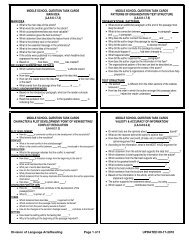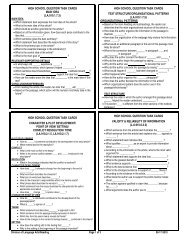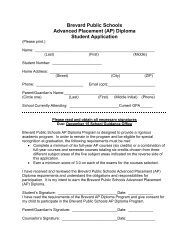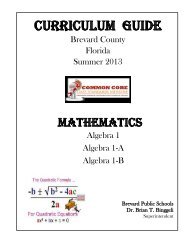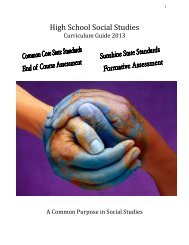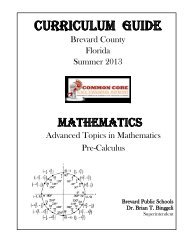Science Research Program Guide - Secondary Programs Home ...
Science Research Program Guide - Secondary Programs Home ...
Science Research Program Guide - Secondary Programs Home ...
You also want an ePaper? Increase the reach of your titles
YUMPU automatically turns print PDFs into web optimized ePapers that Google loves.
General Format<br />
MLA Formatting and Style <strong>Guide</strong><br />
MLA style specifies guidelines for formatting manuscripts and using the English language in writing. MLA<br />
style also provides writers with a system for referencing their sources through parenthetical citation in their<br />
essays and Works Cited pages.<br />
Writers who properly use MLA also build their credibility by demonstrating accountability to their source<br />
material. Most importantly, the use of MLA style can protect writers from accusations of plagiarism, which is<br />
the purposeful or accidental uncredited use of source material by other writers.<br />
If you are asked to use MLA format, be sure to consult the MLA Handbook for Writers of <strong>Research</strong> Papers<br />
(6th edition). Publishing scholars and graduate students should also consult the MLA Style Manual and<br />
<strong>Guide</strong> to Scholarly Publishing (2nd edition). The MLA Handbook is available in most writing labs and<br />
reference libraries; it is also widely available in bookstores, libraries, and at the MLA web site. See the<br />
Additional Resources section of this handout for a list of helpful books and sites about using MLA style.<br />
Paper Format<br />
The preparation of papers and manuscripts in MLA style is covered in chapter four of the MLA Handbook,<br />
and chapter four of the MLA Style Manual. Below are some basic guidelines for formatting a paper in MLA<br />
style.<br />
General <strong>Guide</strong>lines<br />
• Type your paper on a computer and print it out on standard, white 8.5 x 11-inch paper,<br />
• Double-space the text of your paper, and use a legible font like Times New Roman or<br />
Courier.<br />
• Leave only one space after periods or other punctuation marks (unless otherwise instructed<br />
by your instructor).<br />
• Set the margins of your document to 1 inch on all sides. Indent the first line of a paragraph<br />
one half-inch (five spaces or press tab once) from the left margin.<br />
• Create a header that numbers all pages consecutively in the upper right-hand corner, onehalf<br />
inch from the top and flush with the right margin. (Note: Your instructor may ask that<br />
you omit the number on your first page. Always follow their guidelines.)<br />
• Use either italics or underlining throughout your essay for the titles of longer works and,<br />
only when absolutely necessary, providing emphasis.<br />
• If you have any endnotes, include them on a separate page before your Works Cited page.<br />
Formatting the First Page of Your Paper<br />
• Do not make a title page for your paper unless specifically requested.<br />
• In the upper left-hand corner of the first page, list your name, your instructor's name, the<br />
course, and the date. Again, be sure to use double-spaced text.<br />
• Double space again and center the title. Don't underline your title or put it in quotation<br />
marks; write the title in Title Case, not in all capital letters.<br />
• Use quotation marks and underlining or italics when referring to other works in your title,<br />
just as you would in your text, e.g.,<br />
o Fear and Loathing in Las Vegas as Morality Play<br />
87



